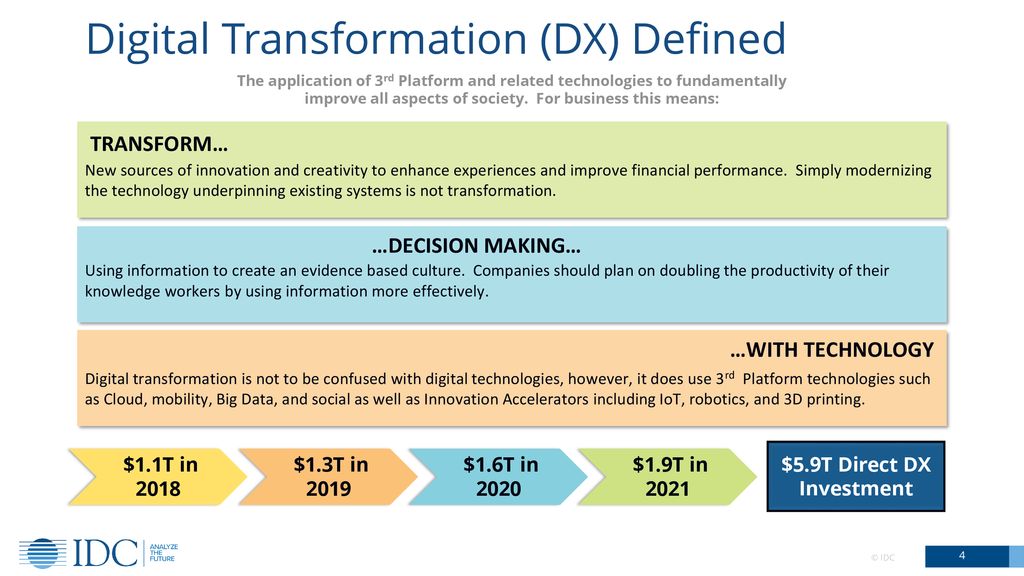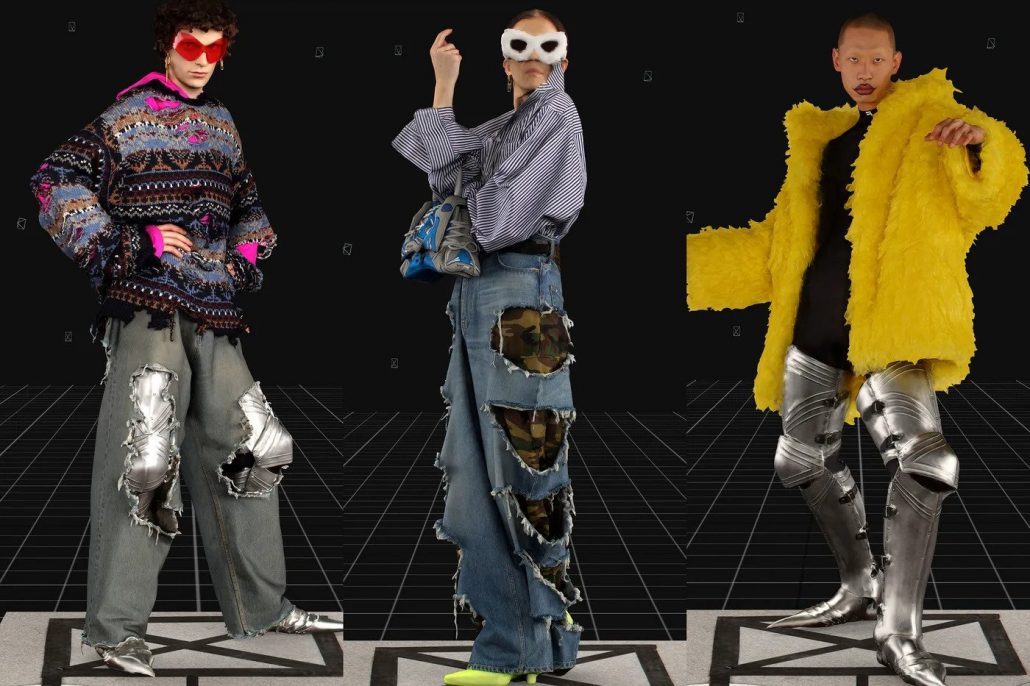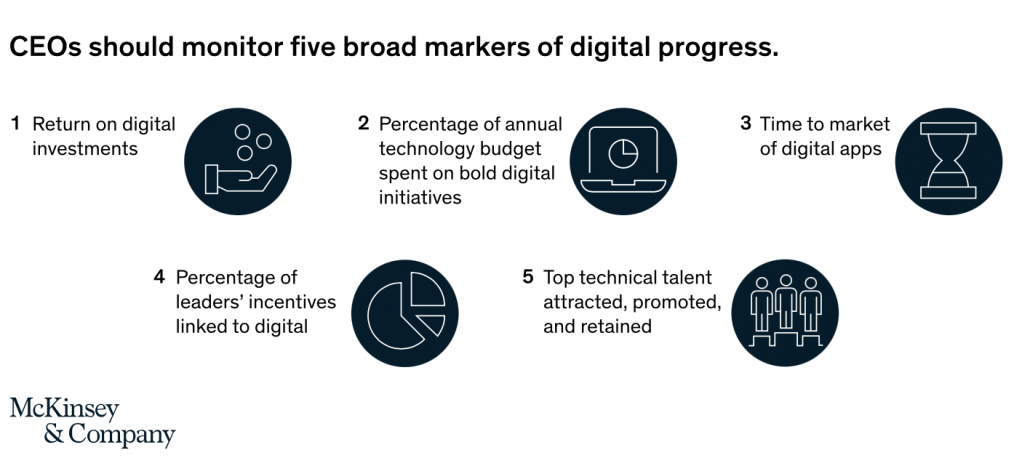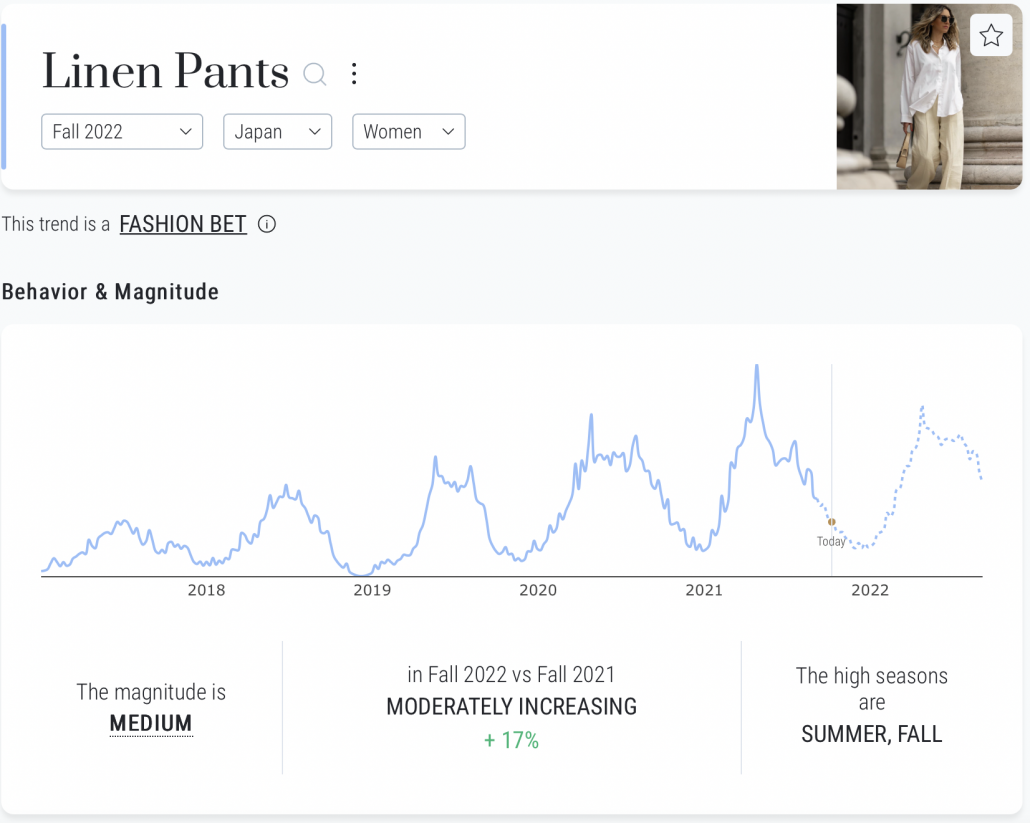Over the last decade, digital transformation has largely been synonymous with digitalization, consumer experience, and tech fields. Discussions surrounding technological innovations and large-scale disruptions have been on the table, but for many years there was no real catalyst to render digital transformation urgent. This is no longer the case. In the past two years, companies have had transformation thrust upon them, remodelling their internal and external processes to keep up. “Speed,” in the words of HfS Research Director David Cushman, “was the primary KPI [during the pandemic].”
Indeed, transformation is a fitting word for this phenomenon, as it has become evident that the status quo just isn’t cutting it. But what does this mean, really? If DX is so vital for a company’s success, there should be more clarity about what this looks like realistically. This is especially evident when we look at the numbers:
According to the International Data Corporation (IDC),
75% of companies globally will have “comprehensive digital transformation roadmaps” by 2023, compared to today’s 27%.
And if we look at the fashion industry specifically, the numbers are equally motivating: this industry will see the second-largest DX spending by 2025 according to the same research. The trajectory of the market now begs fashion leaders to galvanize their teams into embracing digital transformation for a more successful brand today and tomorrow. Together, let’s explore the following question: How do I organize the various teams within my fashion company for a digital transformation?

Redefining success is the first step to your DX strategy
To answer this question, we must first delineate the Why: why do you want to integrate digital transformation? Determine your vision, objective, or even your problem. This may be increasing speed-to-market, improving customer experience, or overhauling sustainability efforts. A successful DX strategy is crystal clear on your personal definition of success for your company; if it’s clear to you, it will be clear to your teams, as well. Keeping everyone on the same page and looking in the same direction is a gamechanger for any company.

Once you’ve identified the Why, there now needs to be a fitting way to measure its success. In the same way that a clear objective keeps you and your teams aligned, well-defined metrics are just as important. Digital transformation metrics require some fine tuning, as DX is still evolving and it’s different for everyone. For executives, it’s important to keep the following in mind when determining DX metrics:
- Macro metrics are indispensable across teams and the company for alignment
- Micro metrics are indispensable in use cases and experiments for agility
- Consider all outcomes for a more accurate metrics selection, from supply chain efficiency to customer satisfaction

Once the beginning and end points of your company’s digital transformation journey have been established, you can get into the meat of the matter: addressing your teams.
Team strategy: Equality and individuality

From a leadership perspective, the cornerstone of teamwork is recognizing that each team is unique in the way that they think, operate, and execute. The marketing and communication teams have one way of working, and the merchandising teams have another. Much of this is due to behavioral preferences, but leaders must also consider the digital background of each. Some teams will be perfectly comfortable with digital technologies, while others will not.
DX is a learning curve, and not all teams will enter the arena with the same experience. So in order to lay down an even starting line for everyone, it’s important to tailor the following to your teams:
- Communication
- Working environments
- Seminars
- Metrics
Because of varying skill sets and preferences, leaders must also recognize that trust and flexibility are key to a successful DX. This means that a certain independence should be granted to technology and digital teams, for instance, to seek out the best DX solutions within the framework of the leader’s vision. Because the brand’s objectives and metrics have already been defined, teams with tech expertise should be trusted to pinpoint solutions which meet these goals.

To take this initiative a step further, it may be worth introducing a Chief Data Officer (CDO) into the executive lineup. Most, if not all fashion companies have tech and digital teams, and it’s important to give them freedom to innovate, but not all have a CDO. This role is increasingly practical in DX because a CDO determines how a company uses and takes advantage of data — this person provides strategy and analyses to guide a company toward its utmost potential.
According to TechTarget, CDOs have always been expected to manage data governance, data-driven culture, and data strategy, but they are now being expected to become responsible for major digital innovations including AI and IoT. This widening of responsibilities alone speaks to the growing necessity of a CDO for companies who believe in the power of data.
With a CDO, and a dedicated team of data professionals, “[fashion companies] can apply data analysis to address concerns, challenges, risks and opportunities.”

Creating a common language via digital transformation
Synergy is not just about tech teams versus non-tech teams. While each is unique and should be granted the freedom to be so, leaders must also strike the complex balance of autonomy and alignment between their teams. Designers should learn from merchandisers, just as merchandisers should learn from designers, for instance. As such, the first step to cross-team alignment is establishing a common language in order to facilitate communication and understanding of the other. For leaders, this means creating an environment in which such an objective is encouraged. DX will look different to every team, but it’s essential to create a common language for smooth communication and rational decision-making.
And in order to speak a common language, there must be a synchronization of information across teams. Each and every team must be able to access the same data, whether it’s the IoT, front versus back end, or even raw data. Having one centralized platform is the best way to create this synergy, in which all information and content can be integrated across teams.

Guiding your teams to digital transformation
Of course, a good DX leader is open to innovation. The very nature of digital transformation is innovative — we’re now seeing new technologies, new ways of thinking, and new directions for fashion companies. To a certain extent, embracing the new often means compromising the old. What are called “legacy technologies” are those mechanisms that tend to hinder a company more than they push them forward, and it’s not always easy to identify what these are, or how to replace them.
According to Deloitte, “[Legacy solutions] prevent many organizations from advancing and supporting analytics, real-time transactions, and a digital experience.”

This of course manifests itself on a company-wide level, but also within teams. Design teams, for instance, may be reluctant to embrace new design software or AI-based trend forecasting for fear of abandoning their old, trusted processes. This is where change management is advantageous, as it focuses on the human side of change within a company. In change management, actions like the following make a world of difference in an organizational transformation like DX:

- Clearly defining objectives
- Checking in with your teams
- Addressing people’s concerns
- Tailoring metrics for different teams and projects

And because change management includes theories drawn from areas including psychology, behavioral science, and systems thinking, it is an approach which is holistic in its carryout and impact. This way, leaders can better guide and reassure their teams that DX seeks to marry human know-how with technology, not replace it entirely.
It must also be noted that change management can come from various sources — often, companies integrate a combination of internal and external resources to achieve their change management strategy. Internal resources entail existing employees taking on the role of Change Manager for different teams, or company executives assuming the lead. On the other hand, external resources typically entail outside advice or data — companies seek out experts in their industry as well as in organizational transformation. These options include consulting firms specialized in digital transformation, or other companies which provide digital solutions supported by ample human resources to properly accompany change management.

Indeed, new, disruptive technologies like AI-based trend forecasting, blockchain, augmented reality, and more are gamechangers, and can’t be ignored. But without the human element, we’re left with only that: disruption. Combining creativity with data, know-how with technology — this is the key to fashion companies evolving with the market and serving their customers. It’s also the key to setting and resetting the status quo, both as an organization and as a player in the industry.
A long lasting digital transformation strategy
Ultimately, digital transformation means much more than integrating new technologies into your company. Each and every one of your teams must be on board, and feel qualified and enthusiastic along the way. It’s up to the leaders to create a company culture and roadmap defined by digital transformation, horizontally and vertically. In the end, your employees, customers, and even competitors will feel the difference.




